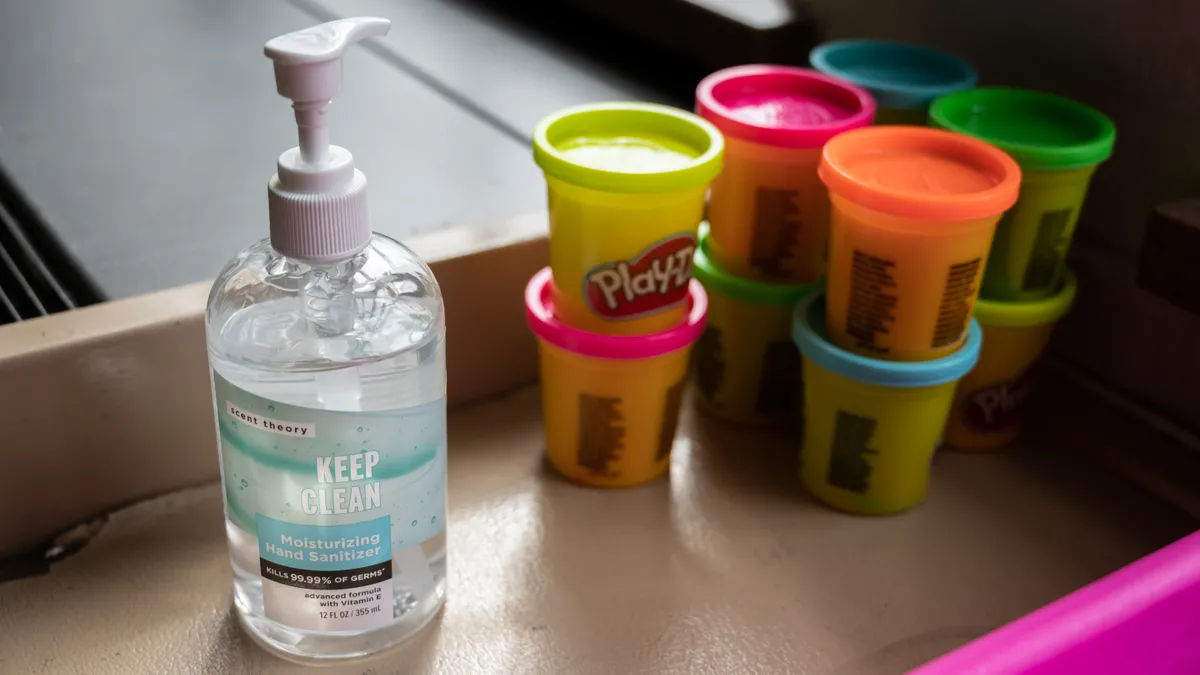Dive Brief:
- School systems that requested Federal Emergency Management Agency funding for pandemic recovery generally claimed reimbursement for cleaning and disinfecting, according to the agency.
- New York's White Plains Public Schools, for example, expects to receive a total of $1.5 million from FEMA's COVID-19 public assistance program to help pay for disinfectant, personal protective equipment and temperature scanning devices used as schools reopened to students, said Superintendent Joseph Ricca.
- Although the bulk of money used by schools to pay pandemic-related bills is coming from Elementary and Secondary School Emergency Relief funds, the FEMA assistance is helping to offset unexpected expenses due to the public health crisis.
Dive Insight:
White Plains' COVID-19 expenses are more than $6 million and include reopening costs, such as signage, HVAC filters, desk shields, outdoor learning spaces and more, Ricca said.
Ann Vaccaro-Teich, the district's assistant superintendent forof business and operations, said the district has submitted eight reimbursement applications with FEMA over the past two years. The district has already received $200,000 from the agency as of June 30.
"We are grateful to be able to say that we can put those monies back in our coffers to put towards the things that we need for our children," Vaccaro-Tiech said.
The Coronavirus Aid, Relief and Economic Security Act — or CARES Act — allocated $45 billion for a FEMA Disaster Relief Fund available to state, local, tribal or territorial governments, including schools, according to a FEMA spokesperson. The American Rescue Plan added $50 billion to the FEMA relief fund.
Guidelines were provided for reimbursement requests that supported the costs related to health and safety measures to support in-person learning, according to the spokesperson.
To request reimbursement, districts had to submit a request for public assistance, or RPA, to FEMA through their state, territory or tribal nation or through an electronic portal. The RPA submission deadline was July 1. As requests were approved, the funding was provided to the state and then to the school district. An agency spokesperson said it is not aware of any challenges in the distribution of funds.
Vaccaro-Teich said the district's grant writer worked with a FEMA representative during the application process. The applications were "incredibly time-consuming and very detailed," she added. The district is not expecting to get 100% reimbursement for what it requested.
Both Vaccaro-Teich and Ricca said smaller districts without resources, such as a dedicated grant writer, would likely have challenges submitting the applications. "So many of my colleagues, because they are a small office, they do not have that bandwidth, potentially leaving money on the table," Vaccaro-Tiech said.
That the district has had to document every penny it spent and received is a positive challenge, because that ensures the funds being spent are compliant with FEMA guidelines, said Ricca and Vaccaro-Teich.
The FEMA spokesperson said the agency requires subrecipients to report on the status and progress of projects on a quarterly basis.












